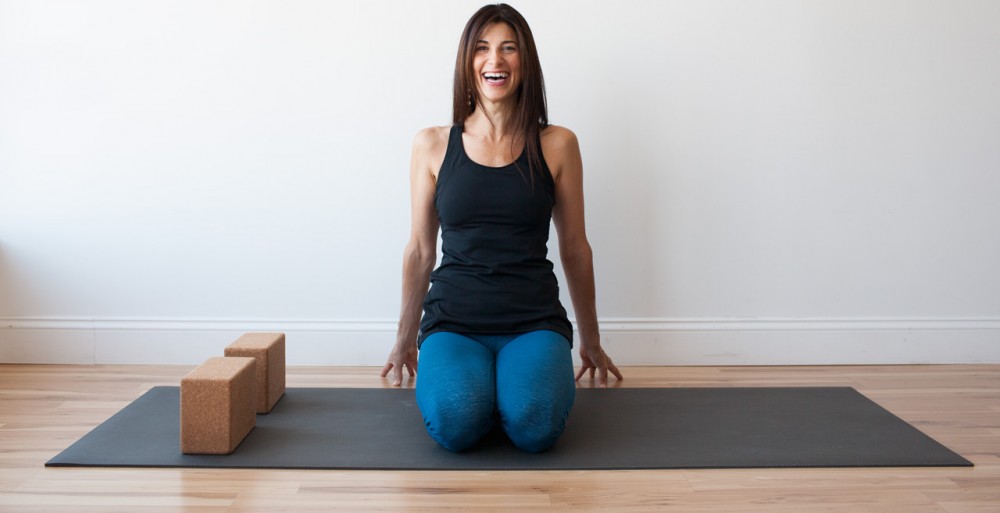Ask yourself, what can I do to feel more healthy today? Make yourself your number 1 investment.


published on Greenster
Yet, for many of us, Saturday and Sunday are far from mini-holidays. Thinking about this fact leads me to reflect on the concept of “time off”. For parents with children, is there really such a thing? If you’re self-employed, what does this expression actually mean? Some of us work, get groceries, cook, clean, do laundry, have family obligations–the to-do list is constant and never-ending. When we think of time off, we visualize taking a break from these daily activities and duties but by the weekend, when we have the “time off” work, we might have to pick up on some of the chores.
If you “can never relax”, as some people have expressed to me, then is time “off” really valuable or any different than time “on”? As well, what are we taking time “off” from? It seems to me that the expression is literally dependant on one’s mind-set. And that, dear friends, is what Yoga can help you with: a relaxed mind can travel through time and space with more ease.
How can Yoga help? Many people turn to Yoga for “stress-management,” expecting yoga to take their stress away. That may not happen, but Yoga can offer the best possible “time-off” in that it gives the thinking mind a little brain holiday. As Daniel J. Siegel says in The Mindful Brain, “Stillness is not the same as a void in activity, it’s more like a stabilizing strength”. This calm inner center is what provides us with the ability to relax even when we are in the midst of taxing circumstances. That is the number one reason to cultivate what I like to refer to as “yoga mind”.
Your “yoga mind” is able to surf into stillness even when you are on-duty, and it becomes your essential tool. I am not referring to ‘spacing out’, but rather, learning how to tame the mind, calm the chatter and experience newness within the daily flow.
Here are 10 ways to cultivate your yoga mind and incorporate the peaceful perspective into your week without getting on a plane (though that could be nice too!):
Photo Credit: Ian Bothwell
savasana isn’t just the 15 minutes at the end of your yoga class, it is a stand-alone practice… why not create a window today?
Benefits of Relaxation:
– deepening your breathing,
– reducing stress hormones,
– slowing down heart rate and blood pressure,
– relaxing your muscles
– increases energy and focus,
– combats illness,
– relieves aches and pains,
– heightens problem-solving abilities,
– boosts motivation and productivity
– increases happiness, by releasing dopamine, seratonin, oxytocin and other immunomodulators to change brain chemistry
Starting a Relaxation Practice:
All you need is the desire or motivation! Even the most stressed out individual can learn how! Rana Waxman can help you determine which techniques are best suited to you, and her Therapeutic Yoga Program is designed to help you learn a sustainable relaxation practice. Learn to move from GO GO GO to LETTING GO – it is vital to a healthy lifestyle.
“asanas act as bridges to unite the body and the mind, and the mind with the soul” ~ BKS Iyengar
my yoga practice builds clarity, dissolves resistance, and helps me move from one place to another
even one conscious breath can connect your mind to your body and this present moment in time
In yoga asana, “bridge pose” or, (SET-too BAHN-dah)
setu = dam, dike, or bridge
bandha = lock
has many benefits
There are many variations, both restorative and more energizing! Use your pose to connect you to better health!
“If you change the way you look at things the things you look at change” – Wayne Dyer Self-explanatory, right?! In terms of Yoga postures, inversions typically help us see things differently. If you practice the headstand you will definitely see whether there is any dirt under the bed! Kidding aside, gift giving season is a really tough one if you focus on what you don’t have and can’t afford. I like the image of flipping a perspective as if it were a pancake. You can do this by taking a few moments to sit still and breathe, walk outside in nature, go to a museum, donate food to a foodbox or a toy to an orphan…whatever you never do and/or enjoy. Give your regular mind a rest, and get in touch with the new perspective that is waiting to be uncovered so that you can literally ‘count your blessings’.
What do you think when you look in the mirror? Continue reading
“Yoga Therapy is the process of empowering individuals to progress toward improved health and well-being through the application of the teachings and practice of yoga” – International Association of Yoga Therapists (definition 2011)
“Almost all experts agree that prevention of osteoporosis is more effective than treatment” – Loren Fishman, MD, and Ellen Saltonstall , Yoga For Osteoporosis
“According to yogic texts, regular practice of Pranayama prevents and cures diseases” – B.K. S. Iyengar, Light on Pranayama
“heyam duhkhamanagatam: Future suffering should be avoided” –Patanjali, Sutra 11.16, The Essence of Yoga by Bernard Bouanchaud
STOP – take a breath, exhale completely
LOOK – inside, be aware
LISTEN – for guidance, the voice of instinct or just common sense Continue reading